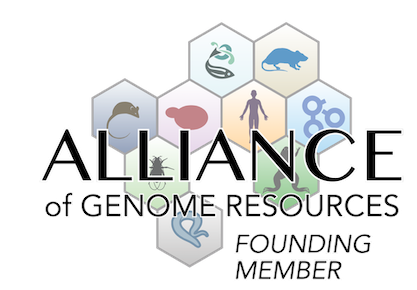nervous system
| N |
• mice exhibit normal early myelination and normal myelination of neurons in culture
|
 Analysis Tools
Analysis Tools|
Allele Symbol Allele Name Allele ID |
Itgb4tm1Efu targeted mutation 1, Elaine Fuchs MGI:2183630 |
||||||||||||
| Summary |
2 genotypes
|
|
|
| ♀ | phenotype observed in females |
| ♂ | phenotype observed in males |
| N | normal phenotype |
| N |
• mice exhibit normal early myelination and normal myelination of neurons in culture
|
|
|
| ♀ | phenotype observed in females |
| ♂ | phenotype observed in males |
| N | normal phenotype |
|
• mice die within hours of birth due to respiratory failure, gastrointestional problems, and gross skin denuding
|
|
• mice exhibit separation of the epithelial-mesenchymal junctions in the tongue and esophagus unlike in wild-type mice
• mice exhibit epithelial degeneration unlike in wild-type mice
• outer layers detach and fuse through extracellular material to the opposing attached areas unlike in wild-type mice
|
|
• mice exhibit separation of the epithelial-mesenchymal junctions in the tongue and esophagus unlike in wild-type mice
• mice exhibit epithelial degeneration unlike in wild-type mice
• outer layers detach and fuse through extracellular material to the opposing attached areas unlike in wild-type mice
|
|
• mice exhibit separation of the epithelial-mesenchymal junctions in the tongue and esophagus unlike in wild-type mice
• mice exhibit epithelial degeneration unlike in wild-type mice
• outer layers detach and fuse through extracellular material to the opposing attached areas unlike in wild-type mice
|
|
• cells within the layer are disorganized, detached from the basal lamina, and form pearls of cells with different-sized-nuclei and very little cytoplasm unlike in wild-type mice
• the innermost layer of the basal layer exhibit degeneration and hemidesmosomes are lost unlike in wild-type mice
|
|
• cells within the layer are disorganized, and pearls of cells with different-sized-nuclei and very little cytoplasm are present unlike in wild-type mice
|
|
• pearls of cells with different-sized-nuclei and very little cytoplasm are present unlike in wild-type mice
|
|
• mice exhibit separation of the dermo-epidermal junctions in the skin unlike in wild-type mice
|
|
• blistering at birth is severe unlike in wild-type mice
• however, delivery by Cesarean section reduced blistering
|
|
• at E15.5 skin is fragile unlike in wild-type mice
• at birth large sections of skin peel from the body surface unlike in wild-type mice
|
|
• mitotic cells are observed in the suprabasal layer unlike in wild-type mice
• basal epidermal cells exhibit apoptosis unlike in wild-type mice
|
|
• mice exhibit separation of the epithelial-mesenchymal junctions in the tongue and esophagus unlike in wild-type mice
• mice exhibit epithelial degeneration unlike in wild-type mice
• outer layers detach and fuse through extracellular material to the opposing attached areas unlike in wild-type mice
|
Mouse Models of Human Disease |
DO ID | OMIM ID(s) | Ref(s) | |
| junctional epidermolysis bullosa non-Herlitz type | DOID:0060738 |
OMIM:226650 |
J:77644 | |
Mouse Genome Database (MGD), Gene Expression Database (GXD), Mouse Models of Human Cancer database (MMHCdb) (formerly Mouse Tumor Biology (MTB)), Gene Ontology (GO) |
||
|
Citing These Resources Funding Information Warranty Disclaimer, Privacy Notice, Licensing, & Copyright Send questions and comments to User Support. |
last database update 12/17/2024 MGI 6.24 |

|
|
|
||


